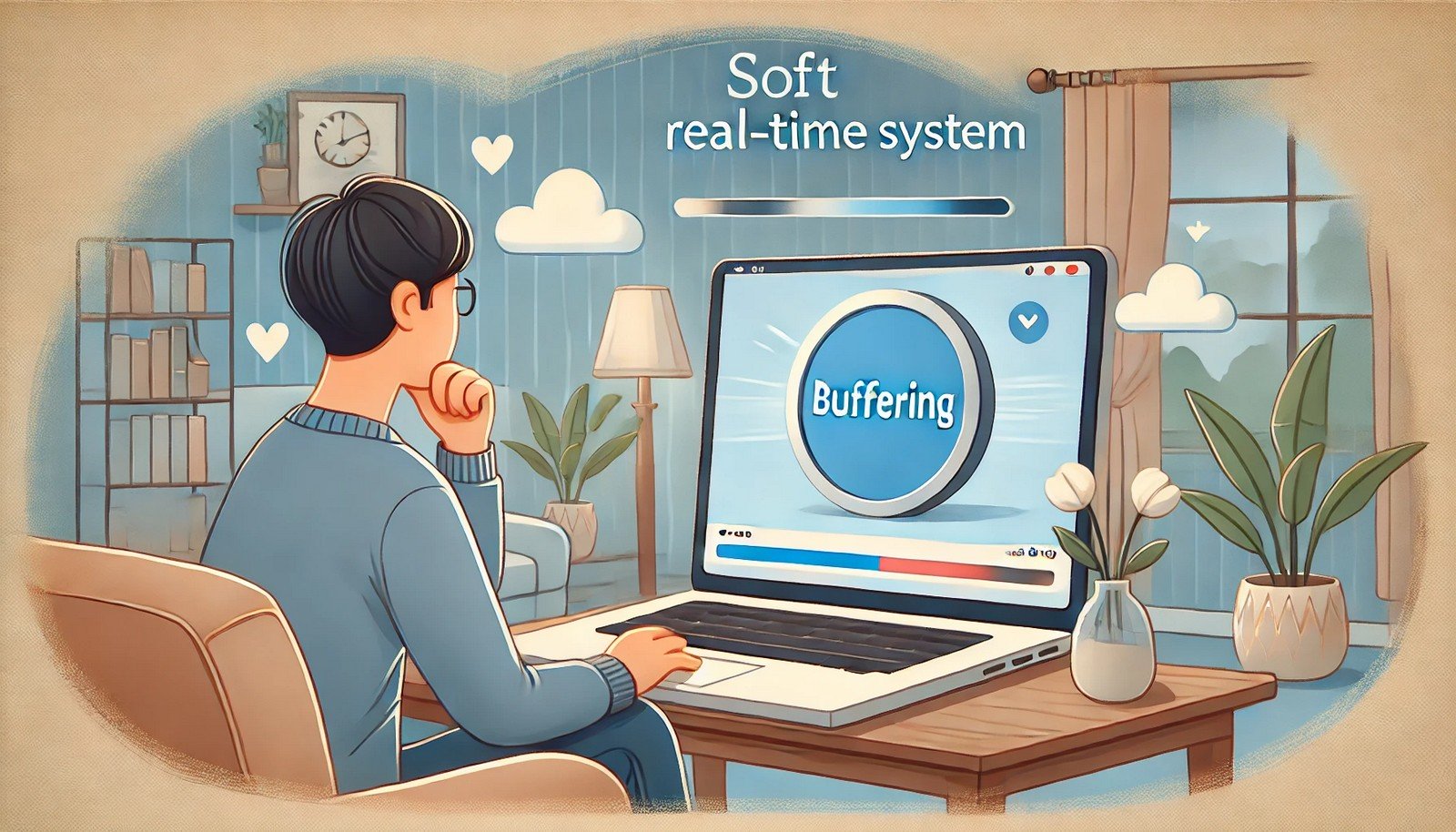Soft Real-Time Systems
 (Representational Image | Source: Dall-E)
(Representational Image | Source: Dall-E)
Quick Navigation:
- Soft Real-Time Systems Definition
- Soft Real-Time Systems Explained Easy
- Soft Real-Time Systems Origin
- Soft Real-Time Systems Etymology
- Soft Real-Time Systems Usage Trends
- Soft Real-Time Systems Usage
- Soft Real-Time Systems Examples in Context
- Soft Real-Time Systems FAQ
- Soft Real-Time Systems Related Words
Soft Real-Time Systems Definition
Soft real-time systems are computing systems where timing constraints are important but not absolutely critical. Unlike hard real-time systems, which must meet strict deadlines, soft real-time systems can tolerate occasional delays without catastrophic failure. These systems prioritize efficiency and responsiveness, often seen in applications like multimedia streaming, online gaming, and voice-over-IP (VoIP).
Soft Real-Time Systems Explained Easy
Imagine you are watching a live sports stream online. If the video lags for a second, you might be annoyed, but the game continues, and you still get to watch it. This is how soft real-time systems work—they try their best to stay on time but can handle small delays without breaking.
Soft Real-Time Systems Origin
Soft real-time systems have evolved with advancements in computer networking and processing power. The concept emerged as computing applications expanded beyond traditional industrial control systems into entertainment, telecommunications, and interactive computing.
Soft Real-Time Systems Etymology
The term "soft real-time" comes from the distinction between "hard" and "soft" real-time constraints. "Soft" signifies flexibility, meaning slight timing deviations are acceptable.
Soft Real-Time Systems Usage Trends
With the rise of streaming services, cloud computing, and real-time communications, soft real-time systems have become more prevalent. Technologies like adaptive bitrate streaming (used in Netflix and YouTube) and real-time voice recognition in virtual assistants rely on soft real-time processing.
Soft Real-Time Systems Usage
- Formal/Technical Tagging:
- Real-Time Computing
- Embedded Systems
- Adaptive Systems - Typical Collocations:
- "soft real-time scheduling"
- "real-time video streaming"
- "low-latency communication"
Soft Real-Time Systems Examples in Context
- Online gaming servers process thousands of player actions in real-time, but minor delays do not break the experience.
- A voice assistant like Alexa processes voice commands in soft real-time, allowing brief pauses without system failure.
- Streaming services adjust video quality dynamically based on network speed, ensuring smooth playback despite fluctuations.
Soft Real-Time Systems FAQ
- What is a soft real-time system?
A soft real-time system is a computing system where meeting timing constraints is important but not mandatory for correct operation. - How is a soft real-time system different from a hard real-time system?
A soft real-time system allows minor delays, while a hard real-time system requires strict deadlines to be met. - What are some examples of soft real-time systems?
Examples include online gaming, video conferencing, and real-time voice assistants like Siri and Google Assistant. - Why are soft real-time systems used in multimedia applications?
Multimedia applications need to deliver data in real-time but can handle occasional delays or quality adjustments. - How do soft real-time systems handle latency?
They use buffering, adaptive scheduling, and priority management to minimize noticeable delays. - Are soft real-time systems suitable for safety-critical applications?
No, safety-critical systems usually require hard real-time guarantees to avoid potential risks. - What scheduling techniques are used in soft real-time systems?
Techniques include round-robin scheduling, priority-based scheduling, and rate-monotonic scheduling. - How do soft real-time systems work in cloud computing?
They manage workloads dynamically, ensuring responsive performance for interactive applications. - What is the role of QoS (Quality of Service) in soft real-time systems?
QoS ensures an acceptable level of performance, optimizing factors like latency, jitter, and bandwidth usage. - Can soft real-time systems be used in robotics?
Yes, in applications where slight timing variations are acceptable, such as robotic process automation.
Soft Real-Time Systems Related Words
- Categories/Topics:
- Real-Time Operating Systems
- Distributed Computing
- Adaptive Scheduling
Did you know?
The first large-scale application of soft real-time systems was in early video conferencing technology. Engineers had to balance network delays while ensuring smooth audio-visual communication, laying the foundation for modern VoIP services.
PicDictionary.com is an online dictionary in pictures. If you have questions or suggestions, please reach out to us on WhatsApp or Twitter.Authors | Arjun Vishnu | @ArjunAndVishnu

I am Vishnu. I like AI, Linux, Single Board Computers, and Cloud Computing. I create the web & video content, and I also write for popular websites.
My younger brother, Arjun handles image & video editing. Together, we run a YouTube Channel that's focused on reviewing gadgets and explaining technology.



Comments powered by CComment